Looking back at your preliminary task, what do you feel you have learned in the progression from it to the full product?
Preliminary Clip: https://www.youtube.com/watch?v=Fk7ttwOBIWI
Final Piece: https://www.youtube.com/watch?v=U3auEiBTXP0
CAMERA:
SHOTS:

In progression from our first opening, we have used many more shots to expand our widespread use of interesting and relevant shots. With our Prelim we only used mid shots, full shots and close ups which was effective but had much more potential. We focused on the technique of Match On Action and the 180 Degree rule, which was broken, yet creates deliberate disorientation and create uncomfortable and on edge feelings for the audience. In our Final Piece we used a wider variety of shots with a larger range of tools and particularly looked at mirroring shots in the two different scenes to create an obvious connection between the two and really create a relation. We included mid shots, long shots, CU, ECU's, POV shots, pans and Match On Action as well as an overall cross cutting technique. This obviously shows progression in planning the shots - from story-boarding to carrying out the shots whilst on location, to create an on edge and ever changing story which creates pace in scene and contrasts further to the other. We consciously kept Laura in the left hand corner of the frame as the first shot is also of her in the left, therefore we decided it would tie in well and keep continuity if we kept Eliza to the left, this is the type of detail we didn't have in our Prelim.
ANGLES:

The angles in our Prelim weren't planned or organsied, so when we filmed it was last minute decisions that gave us canted CU's (which were effective, yet unplanned, which meant they couldn't have been carried out in an efficient way) and also meant that the antagonist looks vulnerable due to her being filmed from a high angle shot which creates a feeling of innocence and lack of power to her overall character. This should have been carried out in a much more conscious way; we only found when we edited we needed the shot and it could not be re filmed. In our Final Piece we used angles that were planned and had time to be carried out properly and professionally and therefore had more effect as they looked correct. We took time to use a POV high angled/above shot of the antagonist's feet and also a low angle canted shot to make her whereabouts and the position of the audience more disorientated and unknown. The POV shots of the antagonist were also carefully considered as it required the audience to feel like someone else was there all through camerawork. We have progressed well by taking more generous amounts of tine to practice and deliver carefully angled shots; rather than just adding them last minute on location and completing the process of working on an opening scene in a commendable manner. The angles disorientate the audience which works for the genre much more effectively than the angles did in the Prelim as they emphasize the danger and create an unnerving vibe, suitable for a thriller.
MOVEMENT:


We disregarded any real use of movement camerawork wise in the Prelim and left the camera on a tripod, therefore it required no movement. We also were unable to explore that whilst filming due to lack of time to film in the location which made the process of filming much more stressed and difficult to achieve results we wanted. Therefore we set up quickly and didn't explore moving the camera. In the Final Piece we investigated using more movement to create a second character, the antagonist, through the camerawork therefore we weren't on the tripod as much and also due to actually being unable to use a tripod for half of our filming we used a Steadicam. We have progressed on by focusing on details such as for POV shots we asked questions such as 'what looks realistic?' and 'does this represent the panic and looming danger we want to create?'. We were much more conscious and focused on relevance and appropriateness of shots for effect more than we did before to create an interesting and engaging outcome, which we didn't do last time. The shakiness of the Final Piece created more movement and heightened the audience's feelings of panic and intensifies as the antagonist gets closer to Eliza which is more effective as a genre than before with our last piece as it enhances the genre's enigma and connoted feelings.
EDITING:
In progression from our prelim piece, we 'stepped up' our work and furthered our technique in terms of cuts, in the Prelim we used simple cuts throughout the whole of the opening, yet in the second we used fade ins, cross dissolves and cuts to really press that we could use more than a simple cut. The effect was that it made the Final Piece more interesting and added a smoother flow we required than before when, even though it fit well, we didn't explicate ourselves to our full potential. Therefore we have progressed in terms of adding fine details to our work than just being satisfied with a simpler product. The transitions were to make the Final Piece flow from one cut to another to either make it have a dream sequence effect to intrigue the audience or cuts for a faster pace to create chaos and panic.
CONTINUITY/TECHNIQUE:
We, as a group, learnt more during the process from Prelim to Final Piece and wanted to get across the genre and enigma of a thriller, therefore did this by using a new technique of cross cutting to add suspense and create mystery within our opening to hold the audience's attention. We also tried in our Prelim to create tension by having sudden cuts whilst following the 180 degree rule, and have then since advanced to create our work with a much more professional and effective technique. We furthered our editing technique by mainly using cross cutting as it created the enigma we desired. We also sharpened our editing as in our Prelim we had shots with slow cuts and it looked rather sloppy, so we rectified this issue in our Final Piece by tooth combing each shot and transition to ensure the cross cutting was as effective as it could be. This whole technique worked to create a flow we didn't achieve in the first opening and makes our work look increasingly successful.
TITLING:
Our titling has progressed massively due to focusing more on the titles and what we could achieve. In the Prelim we had out titles at the end, which was effective and added suspense and drama, yet made the clip feel less like an actual opening of a film and I personally feel, looking back, didn't introduce ourselves with the correct cinematic etiquette. We also included our own names personally and the actors names, which meant it lost its film style professionalism and also was nontraditional. In our Final Piece we included a film company logo, then the company name later (in the font of the title) to deliberately break up the title, and then kept the actual title at the end as we liked the dramatized suspense created also in the first. We also really considered positioning and colour too, and either kept logos and titles central or deliberately to the side to add differentiation, while the colour was kept (like the first) in black and white to keep it simplistic to add more effect. The titles are supposed to create enigma as the naming can draw in a potential audience, and we wanted to entice them with a promising and exciting title that intrigues and makes the audience want to ask questions, which we focused on sparking with the Final Piece title. We also learnt that logos are key and look very impressive and professional therefore we added a title that is obvious it is produced by a film company for the audience to entrust us with providing a high level of entertainment.
MISE-EN-SCENE:
HAIR AND MAKE UP:


In the Prelim we did consider hair and make up, but not to the extent we did in the Final Piece, which enhanced the film's meaning and added continuity and logic to the openings after we had. In the Prelim we worked on Emily, who had dark eye shadow on her face to make her appearance seem less composed and to connote she had been in the 'cage' for a long time. We didn't really consider hair or how it would represent the characters which was a downfall as their long hair made them seem similar and didn't define them as individuals or captor and victim. In the Final Piece we went into full depth, which conveys a huge progression, as we had our actress (Laura) have her make up completed by specification and her hair was curled; which was planned thoroughly for what we wanted to convey and show about her character. Therefore our progression has been considering all aspects of the character - as we were reminded, 'they aren't just your mates, they are your characters.' We focused on both the meaning of Laura's hair and make up, to make her look much more extravagant to the audience to show her vulnerability and disorientate the audience also. We made Laura have a sense of realism, in contrast to her first seen make up look, by having little make up on her to show how real it is and proving that to the audience.
COSTUME:


In our Prelim we were very vague with telling our actresses what to wear, we only stated black clothes for Alichia and a white top and any bottoms for Emily's clothes. The instructions for costumes should have been much stricter and precise as it made their characters lessen in authenticity. However in the Final Piece we controlled what Laura wore for Eliza in a much better way, we asked her for specific clothes such as a bluish tartan style top and dark jeans. We also got her to send us pictures and altered what she was planning on wearing, subtly, a few times. We also had available alternatives if we couldn't get clothing similar to what was planned. Overall we have become much more assertive and controlled over what is worn to really create our character through clothing. We wanted to assure that the costumes had connotations which were clear and connote Eliza's innocence and vulnerability, which wasn't as obvious the first time. We wanted Eliza to look innocent to show realism and enhance the difference between the two scenes and for the audience to recognize the features of a thriller film, which they will like more as it is typical of the genre and can trust what they will be watching.


In our Prelim we were very vague with telling our actresses what to wear, we only stated black clothes for Alichia and a white top and any bottoms for Emily's clothes. The instructions for costumes should have been much stricter and precise as it made their characters lessen in authenticity. However in the Final Piece we controlled what Laura wore for Eliza in a much better way, we asked her for specific clothes such as a bluish tartan style top and dark jeans. We also got her to send us pictures and altered what she was planning on wearing, subtly, a few times. We also had available alternatives if we couldn't get clothing similar to what was planned. Overall we have become much more assertive and controlled over what is worn to really create our character through clothing. We wanted to assure that the costumes had connotations which were clear and connote Eliza's innocence and vulnerability, which wasn't as obvious the first time. We wanted Eliza to look innocent to show realism and enhance the difference between the two scenes and for the audience to recognize the features of a thriller film, which they will like more as it is typical of the genre and can trust what they will be watching.
PROPS:
In the Prelim we found it difficult to find much relevance with our props, which we focused on more in the Final Piece to ensure that the props maintain the continuity and are logical for the sequence. We also paid a lot of attention to making sure, for example, the close up had Laura taking the prop (the earphone) out of her ear with the same hand and holding the phone in the 'correct' hand. We failed to do this last time as our actress Alichia took off her hat during filming and we couldn't use clips without her wearing it as it ruined the continuity of the clip and would have looked very odd. We therefore made sure props were continuously in the same hand etc. as in the Prelim we failed to do so, yet it wasn't seen as the clips weren't essential. We also struggled finding a relevant article to use so we made sure any props this time were thoughtfully planned and that we could have time to adjust them or find other available props - which we didn't give ourselves enough time to do last time.
SETTING/DECOR:
We ensured that all of our locations and Prelim had a sense of danger and volatility to connote the genre of a thriller, and we did encounter major problems with availability we could not oversee with our Prelim location which lessened the quality and therefore effectiveness of our opening as we did not have enough time to film there, therefore made sure we could have available locations for our Final Piece locations. We chose the two spots which are in complete contrast to each other in our Final Piece to really go hand in hand with our cross cutting idea for editing. Both places could be portrayed to have an edge to them. This meant the thriller genre was expressed more so in the Final Piece as we considered time for filming and also where to film. We had thought about filming in London Underground earlier in the filming process but scrapped it as it wouldn't have conveyed what we wanted to show as well as the hall as it is very unusual and untypical that it would be abrupt and unknown for the audience and therefore specifically appropriate for our story line, which we all chose to link with the genre and create enigma for the audience.
We ensured that all of our locations and Prelim had a sense of danger and volatility to connote the genre of a thriller, and we did encounter major problems with availability we could not oversee with our Prelim location which lessened the quality and therefore effectiveness of our opening as we did not have enough time to film there, therefore made sure we could have available locations for our Final Piece locations. We chose the two spots which are in complete contrast to each other in our Final Piece to really go hand in hand with our cross cutting idea for editing. Both places could be portrayed to have an edge to them. This meant the thriller genre was expressed more so in the Final Piece as we considered time for filming and also where to film. We had thought about filming in London Underground earlier in the filming process but scrapped it as it wouldn't have conveyed what we wanted to show as well as the hall as it is very unusual and untypical that it would be abrupt and unknown for the audience and therefore specifically appropriate for our story line, which we all chose to link with the genre and create enigma for the audience.
LIGHTING:


Lighting is key to set and enhance tone is thrillers and generically the lighting is usually intense or low key. In the Prelim we only used an LED light without a filter and it worked very well, but after spending more time and gaining so much knowledge of the extension that lighting goes to we as a group felt only an LED wouldn't create the effect and set the eerie and mysterious mood we wanted to improve from last time. We therefore used a reflector to create a subtle glow on our main character's face that would define her facial features slightly more to alert the audience of her panic and confusion so the feelings would be reciprocated by the audience. We held details such as holding the reflector close to her face and adjusting it accordingly and also knowing when to intensify the LED light. We never went into so much detail when we filmed our Prelim but I am glad we know what to do to add an extra touch of professionalism. It also worked well in the hall scene as it was highlighted more that we used lighting once filtered into black and white.


Lighting is key to set and enhance tone is thrillers and generically the lighting is usually intense or low key. In the Prelim we only used an LED light without a filter and it worked very well, but after spending more time and gaining so much knowledge of the extension that lighting goes to we as a group felt only an LED wouldn't create the effect and set the eerie and mysterious mood we wanted to improve from last time. We therefore used a reflector to create a subtle glow on our main character's face that would define her facial features slightly more to alert the audience of her panic and confusion so the feelings would be reciprocated by the audience. We held details such as holding the reflector close to her face and adjusting it accordingly and also knowing when to intensify the LED light. We never went into so much detail when we filmed our Prelim but I am glad we know what to do to add an extra touch of professionalism. It also worked well in the hall scene as it was highlighted more that we used lighting once filtered into black and white.
POSITIONING/BODY LANGUAGE/FACIAL EXPRESSIONS:


Body language and facial expression in the Prelim was one aspect we never really looked at or focused on, we gave the actresses context to the scenes and as we picked people who are Drama students we just let them use their innovative to make the character. However, when we filmed our Final Piece we really instructed our actress to create the tone and character we wanted - an easy spot generically for any thriller audience member as they will recognize the panic and the communication through physicality will tell them Laura had the role as victim. We wanted to really explicate this in our Final Piece as we progressively realized that creation of character makes the roles in the genre explicit and enhances the viewing - we made Laura look scared, nervous and worried to convey the stereotypical danger a thriller encases which we want to signify a looming presence over her in her short lived equilibrium. We did show this briefly in CU's in our Prelim piece, but more so here in long, mid and close up shots to encompass her whole body language, which we did by always briefing Laura and directing her.
SOUND:
FOLEYS:
We have majorly progressed with Foley's from our first and second openings. We did use more Foley's in the second piece to create disorientation, yet looking back on our first opening, we saw we really struggled with the use of Foley's in our Prelim as there is are two shots when our actress Alichia walked, and after deciding we wanted to exaggerate her action to show purpose and create tension, so we added a footsteps Foley from Garageband, yet it sounded very unlike how she would have really walked; and therefore sounded fake and took away from her performance. We have learnt from that as when we edited our Final Piece we used the actual sound as it sounded realistic and added tension, which solved the issue of what the first failed to do. We were more cautious of using Foley's and either tweaked them by layering them, as we did with the breathing at the start of our Final Piece, or we decided to stay away from ones that (after testing) would have taken away, once again, from the opening. This therefore shows how we have developed as we put in more time and effort, as we gained more knowledge, to add in Foley's that were effective and sounded correct.
SOUNDTRACK:

Soundtrack had always been quite a difficult part of sound editing for us to all agree suited our piece, which we did find difficult with our Prelim, and we spent a large amount of time on for our Final Piece. As our Final Piece idea for our opening was much more complex we did find it harder to find a soundtrack that worked well for both scenes that cross cut each other. This specific problem hadn't occurred in our Prelim post editing sessions, yet we have still progressed and learnt that we can again further ourselves by cleverly editing two tracks to work together and suit our opening. We took, from the first opening, to really explore around to find a fitting soundtrack, which we did for the first, as it is crucial (which we decided on during our Prelim, from that situation) as we also took a fair amount of time to research for a suitable soundtrack. Therefore we have developed, as mishaps have been overcome from using knowledge of looking further for soundtracks; which we learnt during our Prelim but focused on the second time more.
DIALOGUE:
We had two very different situations for our first and second openings, yet they both included development with use of a lapel microphone to express dialogue in a higher quality. During our Prelim we practiced with the lapel mic to grow accustomed to it, and accidentally didn't record our practice speech. Since then, we made sure to double check the mics. We didn't use all of the lapel sound in our Prelim therefore it sounded really misshapen and lost continuity, which we made sure didn't happen again this time. We had our film almost all without natural sound from the actual clips, and used many well placed Foley's and also used a lapel mic to record myself saying dialogue. This made the sound more effective as the quality was much better and all fit as one. The dialogue was scripted, like the other one, but worked more effectively as it was off screen and we made sure we had enough sound editing time to do more than one take, as in our Prelim we didn't time plan as much as we should have to achieve the results we wanted, and our script wasn't learnt completely and therefore sounds odd and doesn't flow. Therefore we have progressed in time management of sound editing and have used the lapel microphones to increase the quality continuously, to keep the sound flowing and less rough.
I think as a group we have hugely progressed,we understand the genre of thrillers in much more depth and detail and know to finalize everything so it shows meaning and conveys a code, enigma or a convention the audience will recognise and act upon. We know much more about correct and intriguing camerawork, mise en scene that portrays the messages we want deliberately, editing techniques to further tense and slower moments and use sounds that work which are on and off screen, diegetic or non diegetic - all for effect.
We have majorly progressed with Foley's from our first and second openings. We did use more Foley's in the second piece to create disorientation, yet looking back on our first opening, we saw we really struggled with the use of Foley's in our Prelim as there is are two shots when our actress Alichia walked, and after deciding we wanted to exaggerate her action to show purpose and create tension, so we added a footsteps Foley from Garageband, yet it sounded very unlike how she would have really walked; and therefore sounded fake and took away from her performance. We have learnt from that as when we edited our Final Piece we used the actual sound as it sounded realistic and added tension, which solved the issue of what the first failed to do. We were more cautious of using Foley's and either tweaked them by layering them, as we did with the breathing at the start of our Final Piece, or we decided to stay away from ones that (after testing) would have taken away, once again, from the opening. This therefore shows how we have developed as we put in more time and effort, as we gained more knowledge, to add in Foley's that were effective and sounded correct.
SOUNDTRACK:

Soundtrack had always been quite a difficult part of sound editing for us to all agree suited our piece, which we did find difficult with our Prelim, and we spent a large amount of time on for our Final Piece. As our Final Piece idea for our opening was much more complex we did find it harder to find a soundtrack that worked well for both scenes that cross cut each other. This specific problem hadn't occurred in our Prelim post editing sessions, yet we have still progressed and learnt that we can again further ourselves by cleverly editing two tracks to work together and suit our opening. We took, from the first opening, to really explore around to find a fitting soundtrack, which we did for the first, as it is crucial (which we decided on during our Prelim, from that situation) as we also took a fair amount of time to research for a suitable soundtrack. Therefore we have developed, as mishaps have been overcome from using knowledge of looking further for soundtracks; which we learnt during our Prelim but focused on the second time more.
DIALOGUE:
We had two very different situations for our first and second openings, yet they both included development with use of a lapel microphone to express dialogue in a higher quality. During our Prelim we practiced with the lapel mic to grow accustomed to it, and accidentally didn't record our practice speech. Since then, we made sure to double check the mics. We didn't use all of the lapel sound in our Prelim therefore it sounded really misshapen and lost continuity, which we made sure didn't happen again this time. We had our film almost all without natural sound from the actual clips, and used many well placed Foley's and also used a lapel mic to record myself saying dialogue. This made the sound more effective as the quality was much better and all fit as one. The dialogue was scripted, like the other one, but worked more effectively as it was off screen and we made sure we had enough sound editing time to do more than one take, as in our Prelim we didn't time plan as much as we should have to achieve the results we wanted, and our script wasn't learnt completely and therefore sounds odd and doesn't flow. Therefore we have progressed in time management of sound editing and have used the lapel microphones to increase the quality continuously, to keep the sound flowing and less rough.
Overall Opinion:
I think as a group we have hugely progressed,we understand the genre of thrillers in much more depth and detail and know to finalize everything so it shows meaning and conveys a code, enigma or a convention the audience will recognise and act upon. We know much more about correct and intriguing camerawork, mise en scene that portrays the messages we want deliberately, editing techniques to further tense and slower moments and use sounds that work which are on and off screen, diegetic or non diegetic - all for effect.

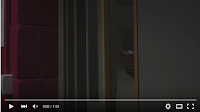




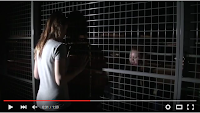


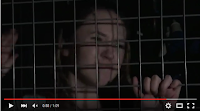



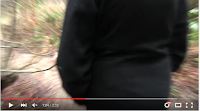


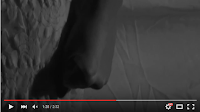














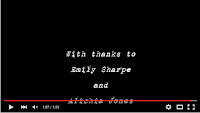




























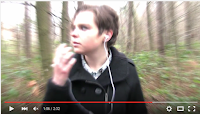

excellent Maria - level 4
ReplyDelete